
Anatomy and Physiology
This first article of a 12-part series on equine anatomy and physiology discusses basic terminology, the horse’s largest organ (his skin), and how horses and humans are alike (and different).

This first article of a 12-part series on equine anatomy and physiology discusses basic terminology, the horse’s largest organ (his skin), and how horses and humans are alike (and different).

Strangles is a highly contagious disease that affects lymph nodes and potentially other organs in the horse. Researchers are working on effective vaccines, but management strategies are even more important in limiting its presence among horses.

There are 205 bones in the horse’s skeleton, and the spot where one or more bones join is the joint. This installment of the anatomy and physiology series focuses on these critical areas of movement.
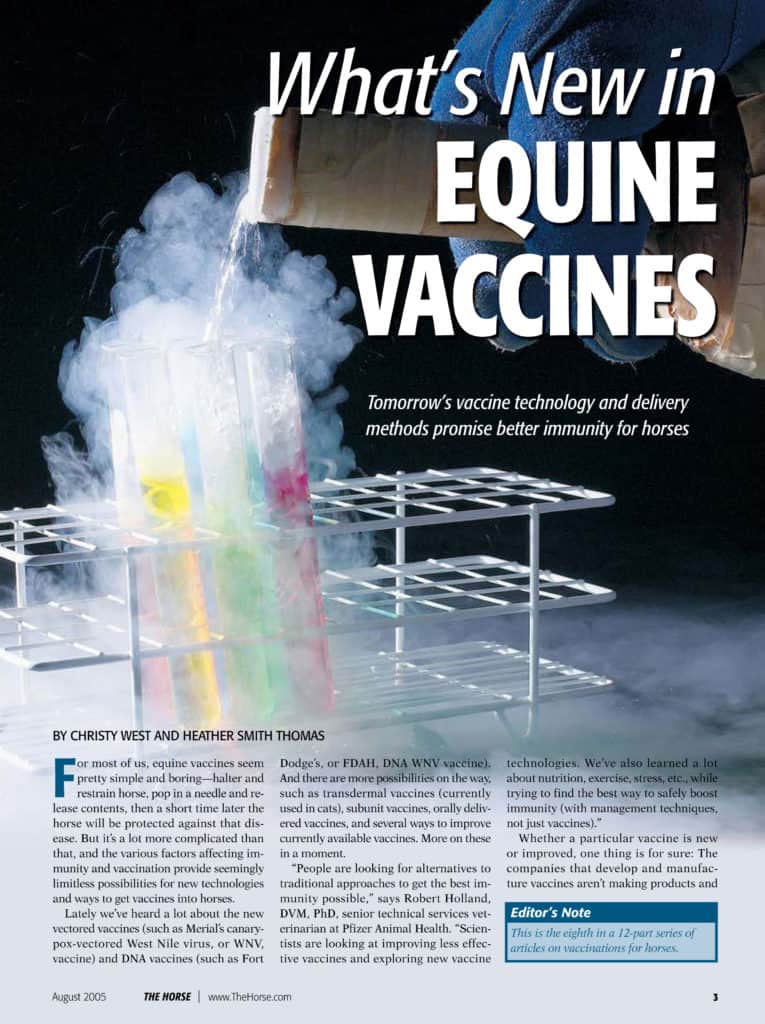
Equine vaccination is complicated, and many factors affecting immunity and vaccination provide possibilities for new technologies and ways to vaccinate horses. Tomorrow’s vaccine technology and delivery methods promise better immunity for horses.

The foreleg of the horse is, for the most part, a model of good engineering. Most of a horse’s weight is carried on its forelimbs. Good conformation will help ensure long-term soundness.
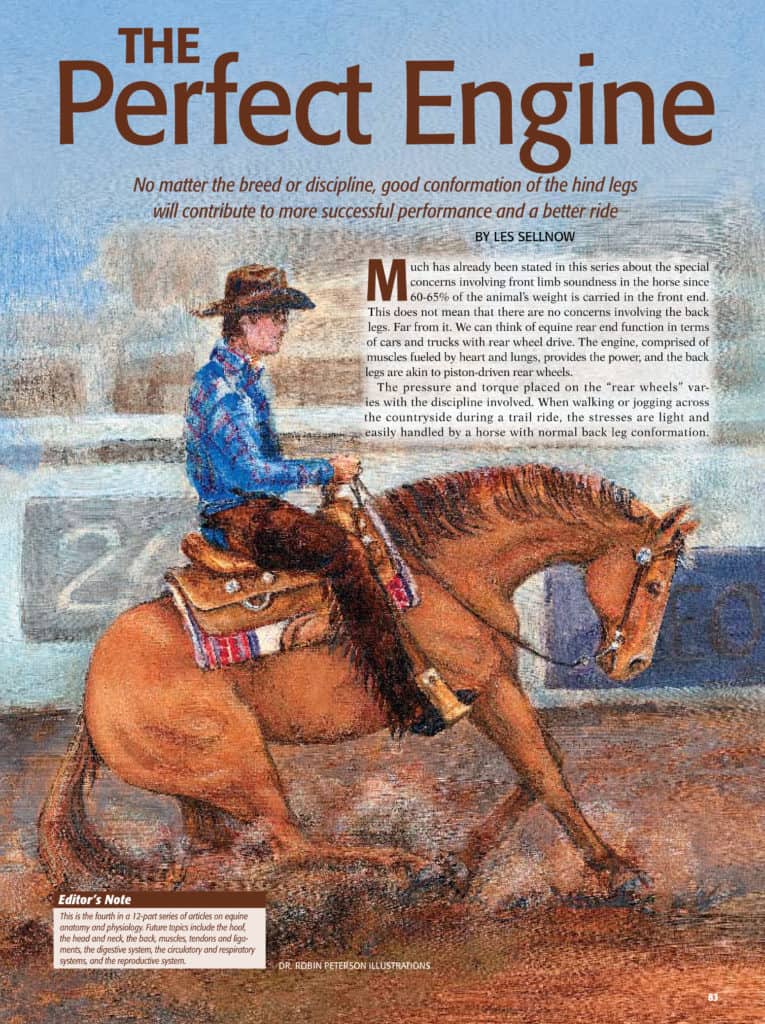
No matter the breed or discipline, good conformation of the hind legs will contribute to more successful performance and a better ride. We want a horse to have excellent rear leg conformation so that it can tolerate the demands placed on it.
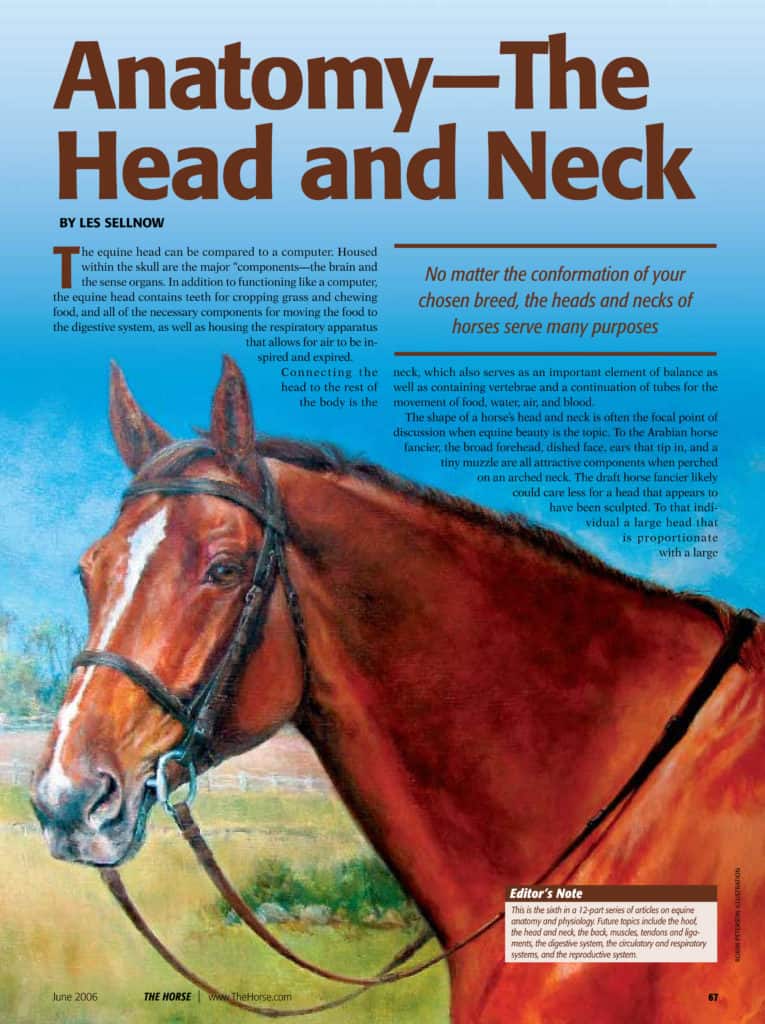
Anatomy and physiology of the horse’s head and neck, and related structures such as the eyes, ears, mouth/teeth, and upper respiratory tract.
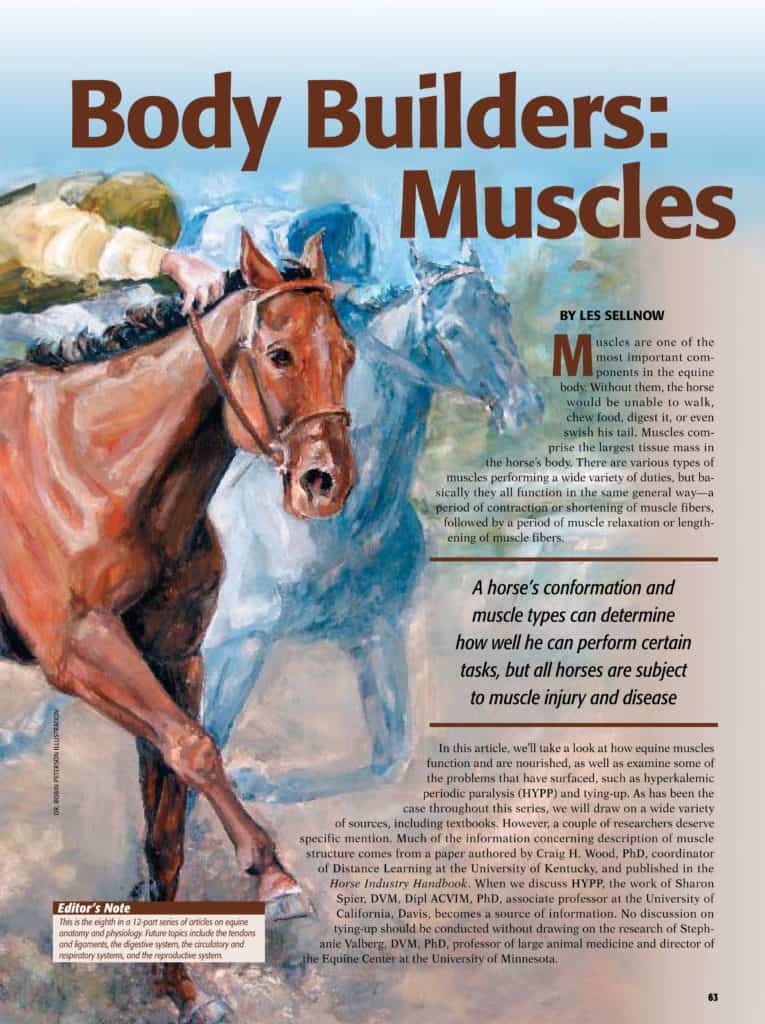
A horse’s conformation and muscle types can determine how well he can perform certain tasks, but all horses are subject to muscle injury and disease. In this article, we’ll take a look at how equine muscles function and are nourished.
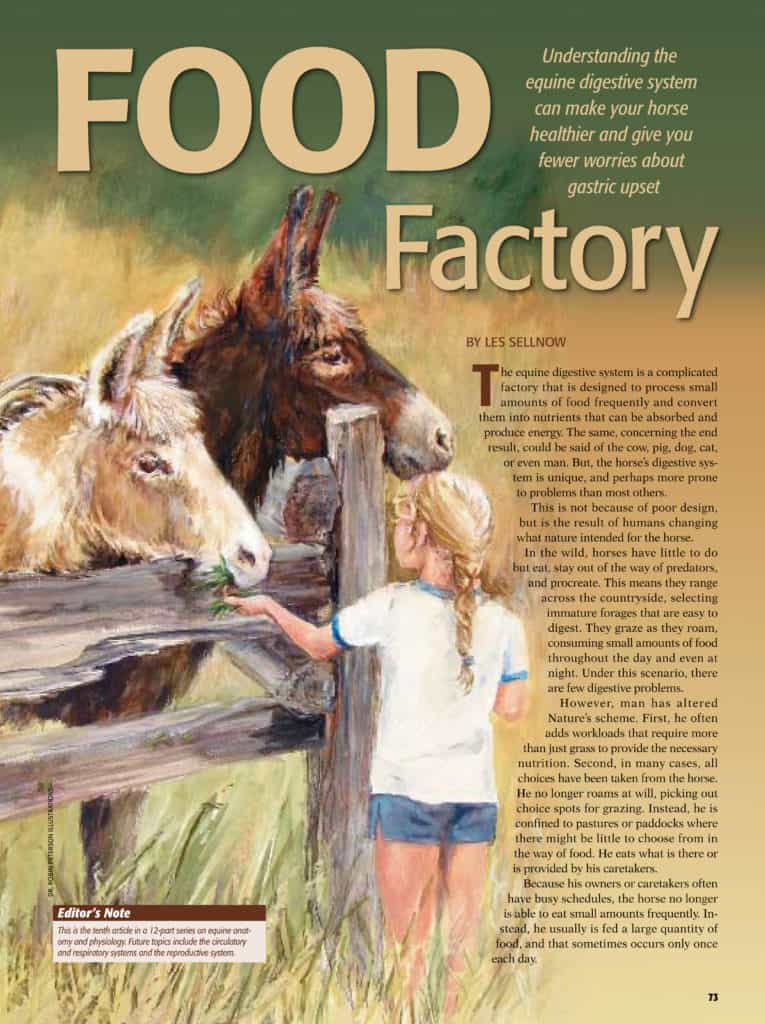
Understanding the equine digestive system can make your horse healthier and give you fewer worries about gastric upset. In this article, we’ll take a look at just how this “factory” is designed and how it functions.

The horse’s circulatory and respiratory systems constitute its engine. Here, we’ll take a close a look at these two systems and the manner in which they function.
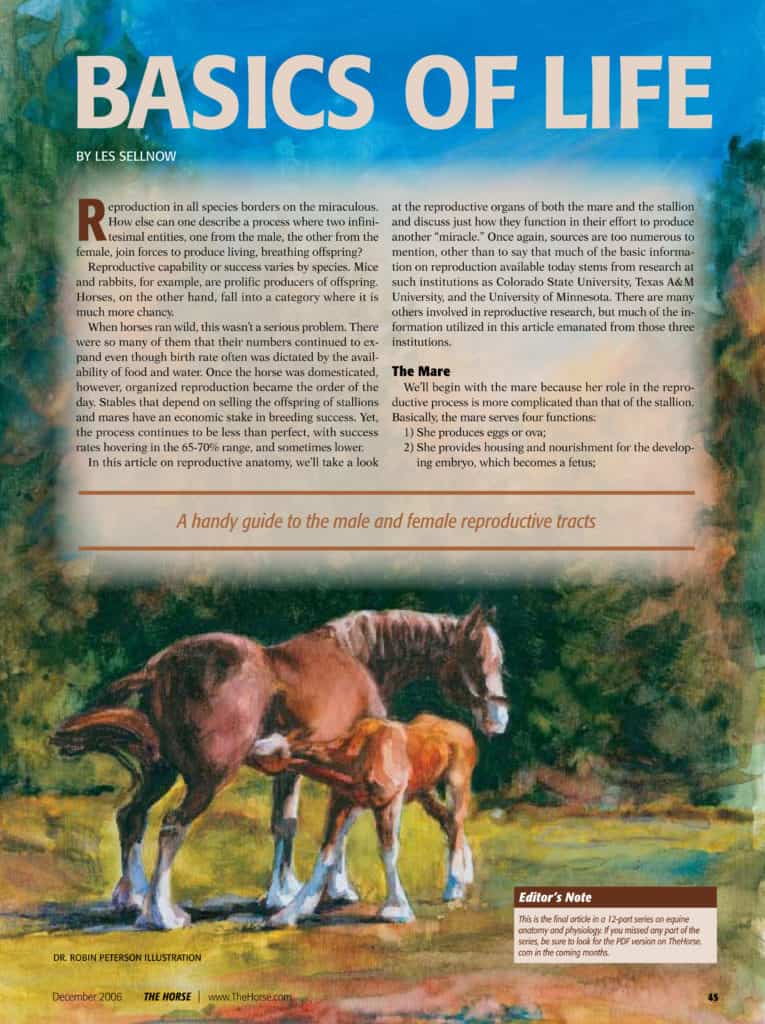
In this article on reproductive anatomy, we’ll take a look at the reproductive organs of both the mare and the stallion and discuss just how they function in their effort to produce another “miracle.”

Learn how your horse’s anatomy works with our complete anatomy and physiology guide, including basic terminology, skin, forelimbs, hindlimbs, feet/hooves, head and neck, tendons/ligaments, muscles, digestive, cardiovascular and reproductive systems.
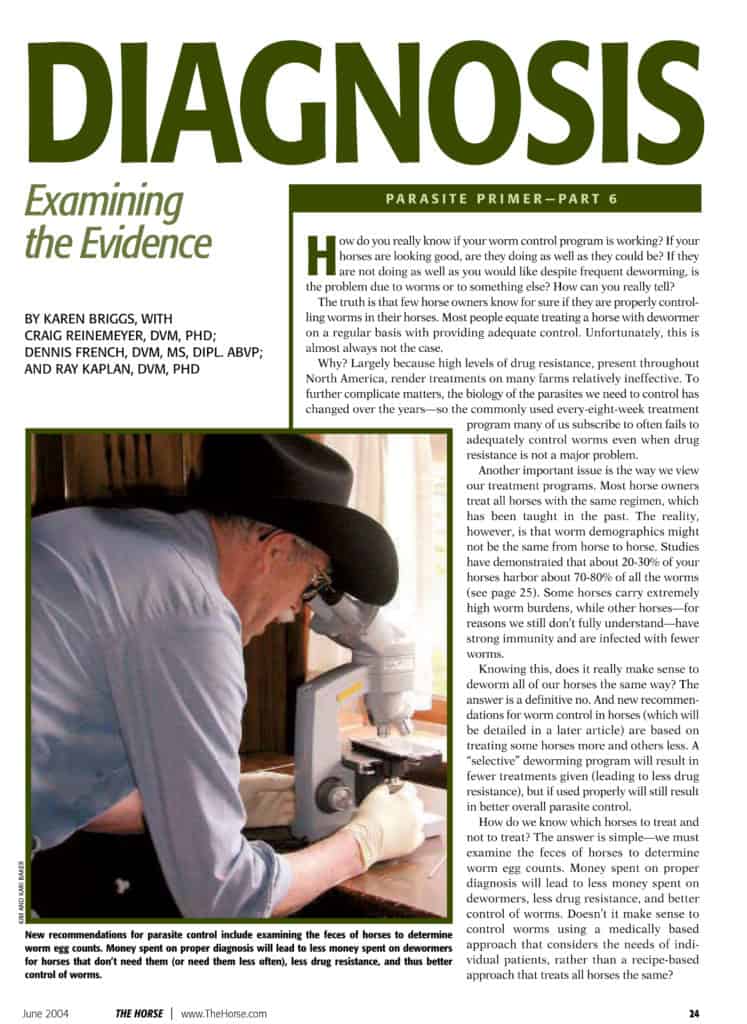
New recommendations for worm control in horses are based on treating some horses more and others less. A “selective” deworming program will result in fewer treatments given (leading to less drug resistance), but if used properly will still result in better overall parasite control.
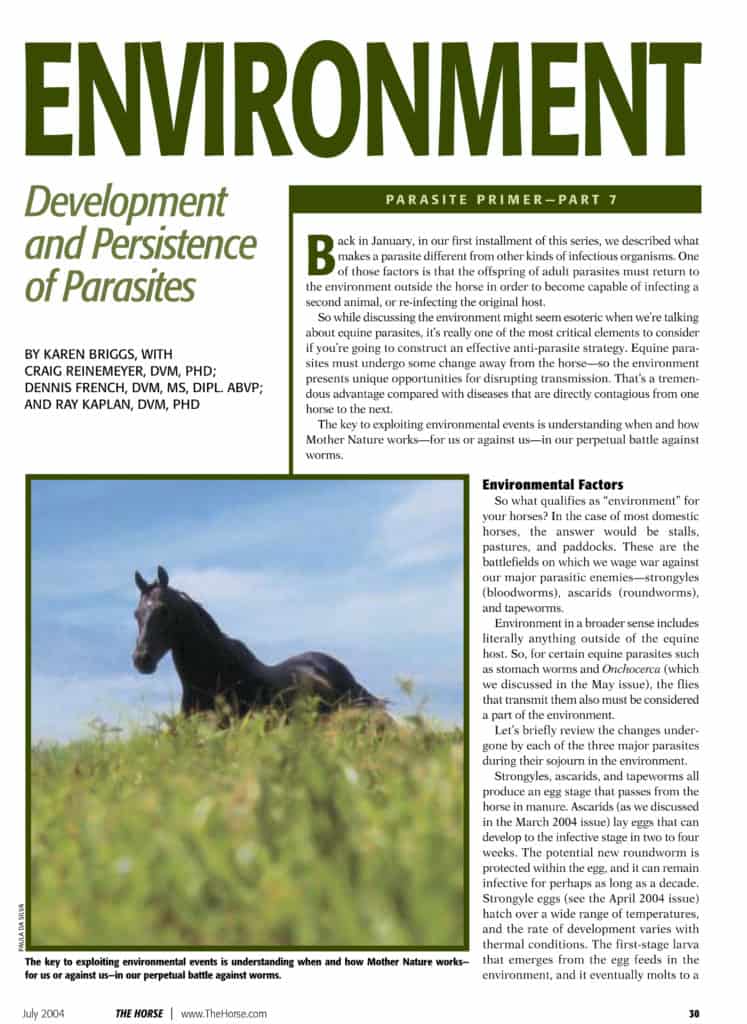
The horse’s environment is a critical elements to consider when constructing an effective anti-parasite strategy. The key to exploiting environmental events is understanding when and how Mother Nature works in our perpetual battle against worms.
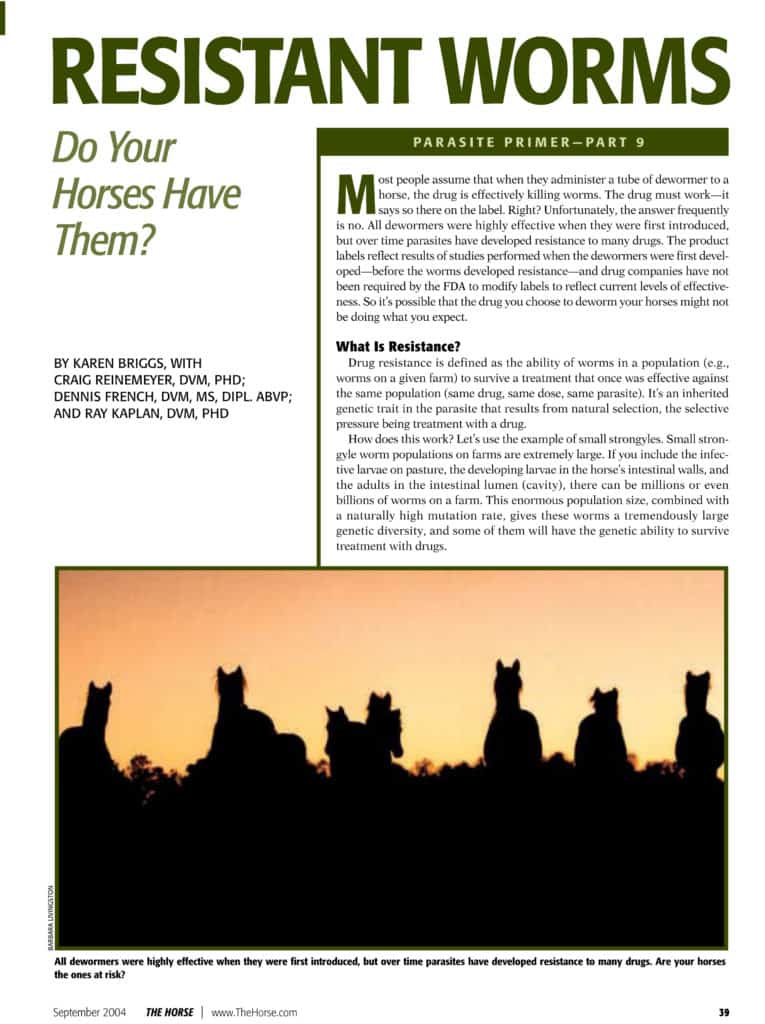
All dewormers are highly effective when first introduced, but over time parasites develope resistance to many dewormers. Are your horses the ones at risk? The product labels reflect results of studies performed before the worms developed resistance.

Are there other things you could be doing in addition to using anthelmintics to minimize your horse’s parasite load? Not all strategies may be practical for your operation or circumstances, but some could have a place in your management routine.
Stay on top of the most recent Horse Health news with
Notifications